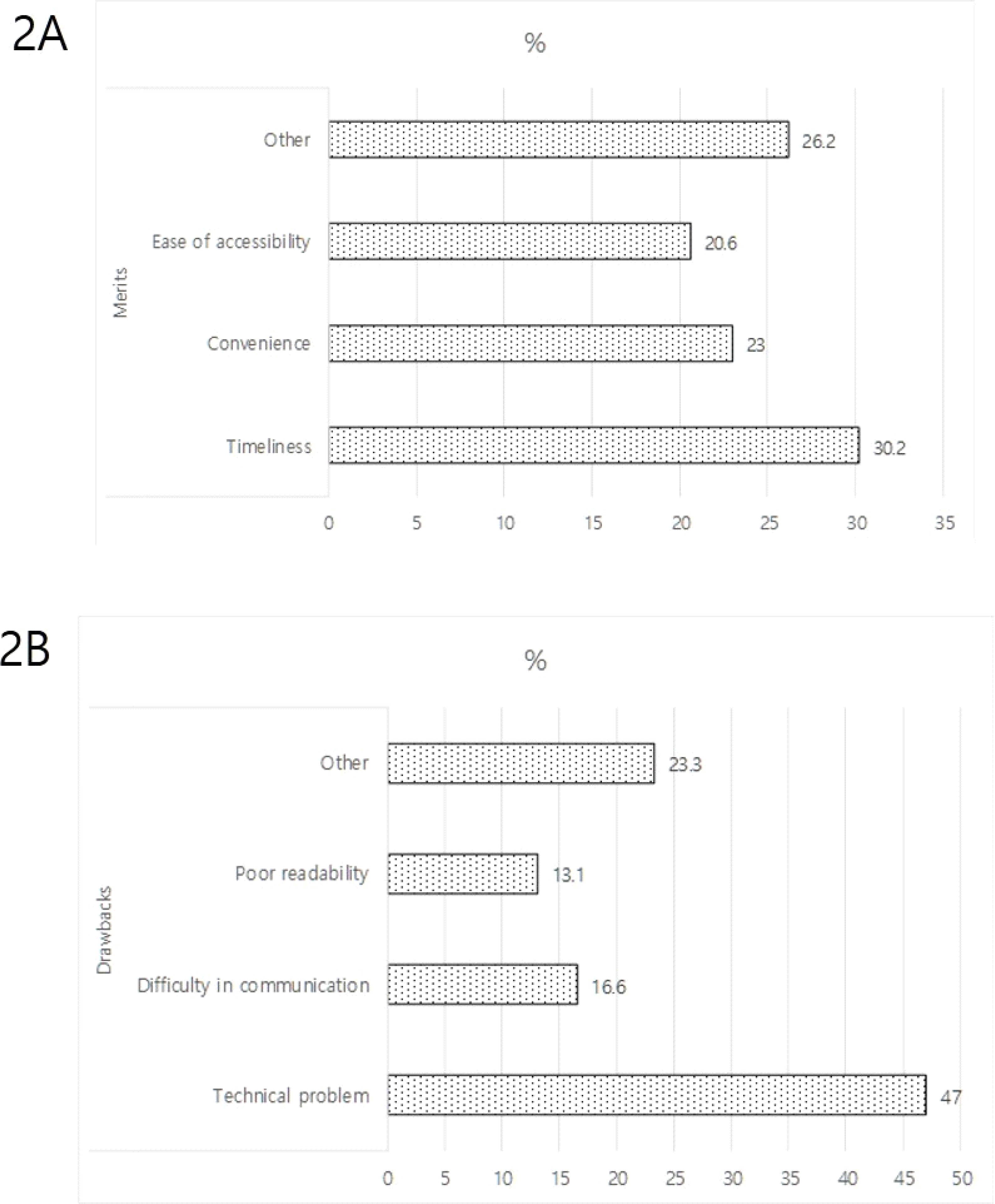Kosin Med J.
2016 Dec;31(2):134-145. 10.7180/kmj.2016.31.2.134.
A Computer-Assisted, Real-Time Feedback System for Medical Students as a Tool for Web-Based Learning
- Affiliations
-
- 1Department of Laboratory Medicine, College of Medicine, Kosin University, Busan, Korea. terminom@hanmail.net
- KMID: 2365238
- DOI: http://doi.org/10.7180/kmj.2016.31.2.134
Abstract
OBJECTIVES
Medical students sometimes do not receive proper feedback from their instructors. This study evaluated a newly developed automated and personalized real-time feedback system intended to address this issue.
METHODS
Third- and fourth-year medical students participated in quizzes focusing on 17 learning objectives and a five-scale survey that queried their prior knowledge related to blood transfusions. Immediately after completing the quizzes, the students received automated and personalized, real-time feedback and were instructed to take part in self-directed learning. This activity was followed by a final quiz. After completion of the final quiz, the students responded to the five-scale survey that probed the usefulness of and satisfaction with the automated, personalized, real-time feedback system.
RESULTS
Eighty students took part in this study. The third-year group had a higher score for prior knowledge and also on the first quiz (P = 0.008, P = 0.046, respectively). There was no significant difference in final quiz scores between the third- and fourth-year groups (P = 0.633). The scores for usefulness of and satisfaction with the automated, real-time feedback system were 4.45 and 4.34, and 4.55 and 4.40 in the third- and fourth-year students, respectively.
CONCLUSIONS
The automated, personalized, real-time feedback system provided timely and effective feedback for medical students and was helpful for their self-directed learning.
Keyword
Figure
Cited by 2 articles
-
New approach to learning medical procedures using a smartphone and the Moodle platform to facilitate assessments and written feedback
Sang-Shin Lee, Haeyoung Lee, Hyunyong Hwang
Kosin Med J. 2022;37(1):75-82. doi: 10.7180/kmj.22.010.Do we need Moodle in medical education? A review of its impact and utility
Seri Jeong, Hyunyong Hwang
Kosin Med J. 2023;38(3):159-168. doi: 10.7180/kmj.23.139.
Reference
-
References
1. Branch WT, Jr. , Paranjape A. Feedback and reflection: teaching methods for clinical settings. Acad Med. 2002; 77:1185–8.2. Hewson MG, Little ML. Giving feedback in medical education: verification of recommended techniques. J Gen Intern Med. 1998; 13:111–6.3. van de Ridder JM, Stokking KM, McGaghie WC, ten Cate OT. What is feedback in clinical education? Med Educ. 2008; 42:189–97.
Article4. Ende J. Feedback in clinical medical education. JAMA. 1983; 250:777–81.
Article5. Garra G, Wackett A, Thode H. Feasibility and reliability of a multisource feedback tool for emergency medicine residents. J Grad Med Educ. 2011; 3:356–60.
Article6. Gil DH, Heins M, Jones PB. Perceptions of medical school faculty members and students on clinical clerkship feedback. J Med Educ. 1984; 59:856–64.
Article7. Burr SA, Brodier E, Wilkinson S. Delivery and use of individualised feedback in large class medical teaching. BMC Med Educ. 2013; 13:63.
Article8. Halkoaho A, Matveinen M, Leinonen V, Luoto K, Keränen T. Education of research ethics for clinical investigators with Moodle tool. BMC Med Ethics. 2013; 14:53.
Article9. Gormley GJ, Collins K, Boohan M, Bickle IC, Stevenson M. Is there a place for e-learning in clinical skills? A survey of undergraduate medical students' experiences and attitudes. Med Teach. 2009; 31:e6–12.
Article10. Kim KJ, Han J, Park Ie B, Kee C. Medical education in Korea: the e-learning consortium. Med Teach. 2009; 31:e397–401.
Article11. Lee SP, Su HK, Lee SD. Effects of computer-based immediate feedback on foreign language listening comprehension and test-associated anxiety. Percept Mot Skills. 2012; 114:995–1006.
Article12. Fox S, Reid WA, Evans P. Web-based feedback of medical student assessment results. Med Educ. 2003; 37:1036–7.
Article13. Barnett S, Jones SC, Caton T, Iverson D, Bennett S, Robinson L. Implementing a virtual community of practice for family physician training: a mixed-methods case study. J Med Internet Res. 2014; 16:e83.
Article14. Saidinejad M, Zorc J. Mobile and web-based education: delivering emergency department discharge and aftercare instructions. Pediatr Emerg Care. 2014; 30:211–6.15. Kuhbeck F, Engelhardt S, Sarikas A. Online TED.com – a novel web-based audience response system for higher education. A pilot study to evaluate user acceptance. GMS Z Med Ausbild. 2014; 31:Doc5.16. Sampaio-Maia B, Maia JS, Leitᾶo S, Amaral M, Vieira-Marques P. Wiki as a tool for Microbiology teaching, learning and assessment. Eur J Dent Educ. 2014; 18:91–7.
Article17. Seluakumaran K, Jusof FF, Ismail R, Husain R. Integrating an open-source course management system (Moodle) into the teaching of a first-year medical physiology course: a case study. Adv Physiol Educ. 2011; 35:369–77.
Article18. Sparacia G, Cannizzaro F, D'Alessandro DM, D'Alessandro MP, Caruso G, Lagalla R. Initial experiences in radiology e-learning. Radiogra phics. 2007; 27:573–81.
Article19. Wilkinson ST, Couldry R, Phillips H, Buck B. Preceptor development: providing effective feedback. Hosp Pharm Jan. 2013; 48:26–32.
Article20. Sisson SD, Rastegar DA, Hughes MT, Bertram AK, Yeh HC. Learner feedback and educational outcomes with an internet-based ambulatory curriculum: a qualitative and quantitative analysis. BMC Med Educ. 2012; 12:55.
Article
- Full Text Links
- Actions
-
Cited
- CITED
-
- Close
- Share
- Similar articles
-
- Development Effect analysis of Web-based CIA program for Nursing: Application to Maternity Nursing
- Experiences with Establishing and Implementing Learning Management System and Computer-Based Test System in Medical College
- Effects of Mobile Phone-Based App Learning Compared to Computer-Based Web Learning on Nursing Students: Pilot Randomized Controlled Trial
- Effect Analysis and Evaluation of a Virtual Class Applied to Graduate Level Nursing Informatics Course
- An Experimental Trial of Web-based Problem Based Learning



